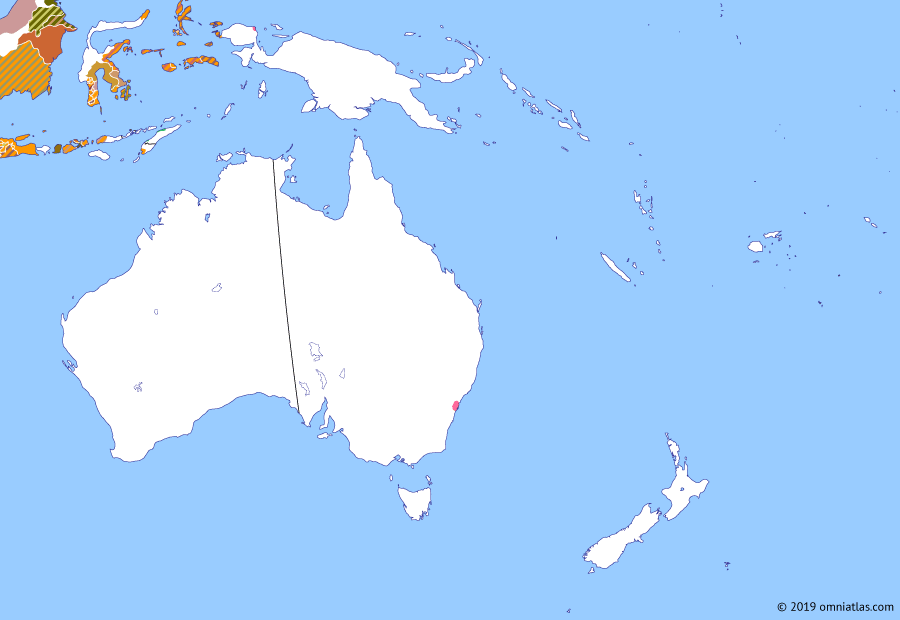Australasia 1794: Australasia and the French Revolution

7 February 1794
7 Feb 1794
Australasia and the French Revolution
26 Jan 1788 First Fleet
28 Apr 1789 Mutiny on the Bounty
7 Feb 1794 Australasia and the French Revolution
23 Jul 1801 Napoleonic France in Australasia
17 Oct 1803 Expanding from New South Wales
26 Jan 1808 Rum Rebellion
18 Feb 1811 Interregnum in the Dutch East Indies
7 May 1815 Settling the Australian interior
29 Feb 1820 Australasia after the Napoleonic Wars
3 Dec 1825 Colony of Van Diemen’s Land
18 Jun 1829 Swan River Colony
1 Jun 1832 Musket Wars
28 Dec 1836 Province of South Australia
6 Feb 1840 Treaty of Waitangi
16 Nov 1840 Colony of New Zealand
17 Feb 1846 Colony of North Australia
30 Aug 1849 Settlement of the South Island
1 Jul 1851 Colony of Victoria
3 Dec 1854 Eureka Rebellion
1 Sep 1855 Tongan Intervention in Fiji
6 Jun 1859 Colony of Queensland
In 1789 the French Revolution forced King Louis XVI of France to accept a constitutional monarchy. Under this reformed regime, the French sent the naval officer d’Entrecasteaux to Australasia with two frigates to find traces of the explorer La Pérouse, who had last been seen leaving Botany Bay in 1788. The expedition spent two years unsuccessfully searching the region—during which d’Entrecasteaux himself died of scurvy (1793)—before arriving in the Dutch East Indies to discover that the revolutionaries had gained control in France, proclaimed a republic, executed the king, and were now at war with much of Europe. A royalist, the new expedition leader surrendered both his ships to the Dutch.